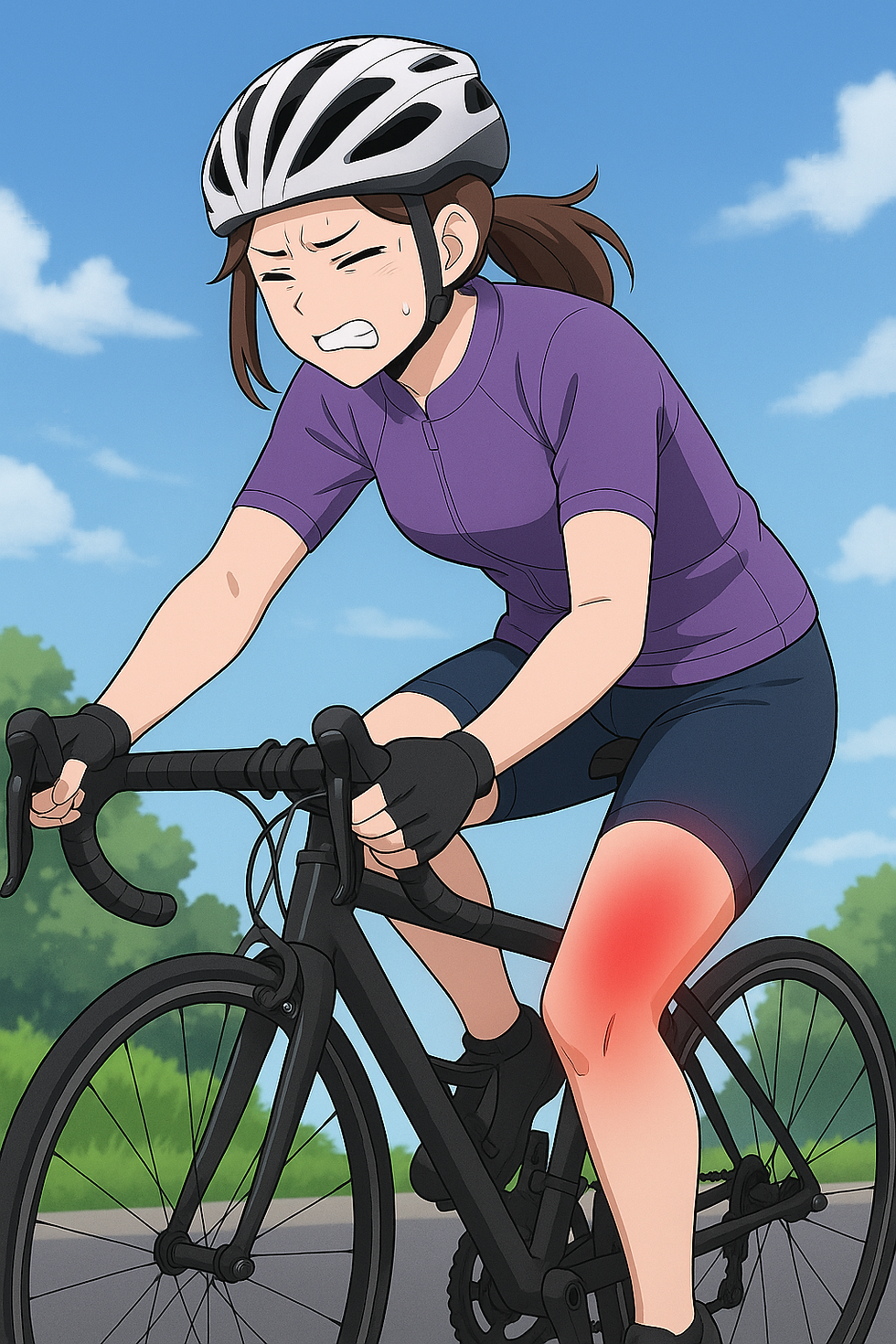Leg Pain Focus: Quadriceps Strain
- MiRae Acu
- Sep 21
- 3 min read

A quadriceps strain — often called a “pulled quad” — happens when the large muscles at the front of the thigh are overstretched or torn. These muscles are critical for walking, running, climbing stairs, and kicking, so when injured, even simple daily movements can become difficult and painful.
Why the Quad Gets Injured
The quadriceps group — rectus femoris, vastus lateralis, vastus medialis, and vastus intermedius — works hard to straighten the knee and stabilize the leg. Sudden or excessive force can overload these muscles, causing microtears or more significant injuries.
Typical causes include:
Explosive Movements: Sprinting, jumping, or sudden kicking.
Direct Impact: A blow to the thigh during sports like soccer or football.
Tight or Fatigued Muscles: Reduced flexibility and endurance increase vulnerability.
Muscle Imbalance: Stronger hamstrings compared to weaker quadriceps, or vice versa, disrupts balance.
Inadequate Warm-Up: Cold muscles are less elastic and more prone to injury.
Spotting a Quadriceps Strain
Quad strains can range from mild tightness to severe tears that limit weight-bearing.
Common signs include:
Sudden Pain in the Front Thigh: Sharp discomfort, sometimes described as a “pull” or “snap.”
Swelling or Bruising: Appears within hours or the next day.
Weakness in Straightening the Leg: Difficulty walking, climbing stairs, or standing from a chair.
Tenderness to Touch: Localized soreness along the front of the thigh.
Stiffness: Reduced ability to bend or straighten the knee fully.
An East Asian Medicine View
In East Asian Medicine, a quadriceps strain is seen as a disruption of the smooth flow of Qi and Blood through the muscles and connective tissues at the front of the thigh. This disruption leads to stagnation, pain, and loss of flexibility.
Common patterns include:
Qi and Blood Stagnation: From trauma or overuse, causing sharp, localized pain.
Cold Invasion After Injury: Exposure to cold or damp may slow healing and worsen stiffness.
Underlying Weakness: Deficiency in systems that nourish tendons and muscles may make recovery longer or increase recurrence.
Treatment works on two levels: addressing the acute pain and supporting the body’s ability to rebuild strength and resilience.
Care Approach at Mi Rae Acupuncture
At Mi Rae Acupuncture, we tailor treatment to the severity of the strain and your lifestyle demands. Our approach may include:
Acupuncture Therapy: To reduce pain, relax tight muscles, and promote circulation.
Massage Therapy: To ease tension, release adhesions, and restore muscle fiber alignment.
Electroacupuncture or Cold Laser: To accelerate healing and reduce inflammation.
Cupping or Moxibustion: Applied when needed to loosen tightness and improve recovery.
Herbal Medicine: Prescribed to move Blood, clear inflammation, and strengthen muscle and tendon health.
The goal is not only pain relief but also restoring mobility and preventing future setbacks.
Steps You Can Take at Home
Simple measures can support healing and reduce the risk of re-injury:
Rest Initially: Limit activities that cause pain, especially sprinting or jumping.
Apply Ice Early: 10–15 minutes several times a day for the first 48 hours to control swelling.
Heat Later: After initial swelling subsides, gentle heat can relax tight muscles and improve blood flow.
Gentle Stretching: When pain improves, ease into controlled quad stretches.
Strengthening Exercises: Gradually add squats, step-ups, and resistance work when cleared.
Warm-Up Before Activity: Dynamic stretching and light movement reduce risk of recurrence.
Moving Stronger, Moving Forward
A quadriceps strain can sideline your activities — but it doesn’t have to keep you from what you enjoy. With the right combination of care and recovery strategies, healing is possible. At Mi Rae Acupuncture, we’re here to help you rebuild strength, restore movement, and move forward with confidence.


